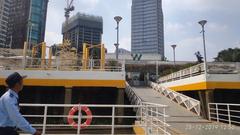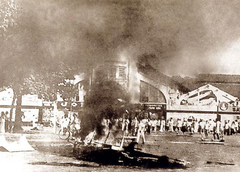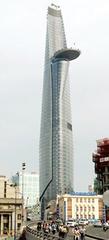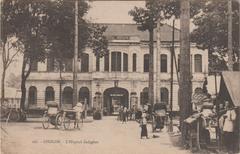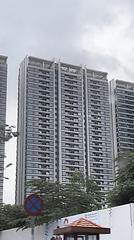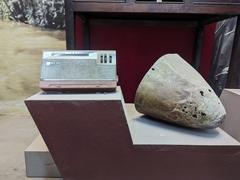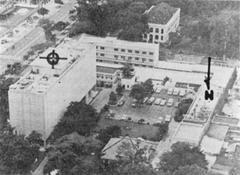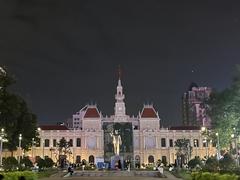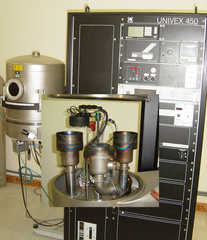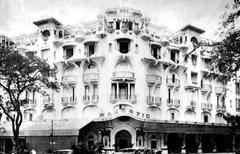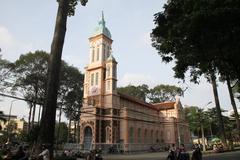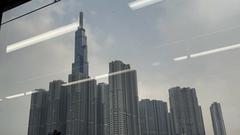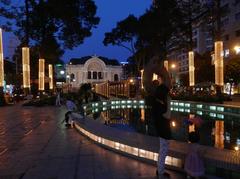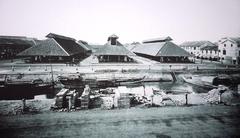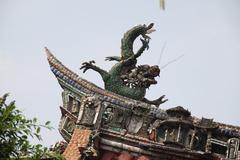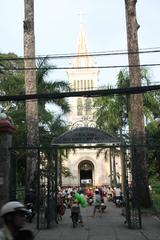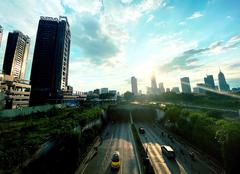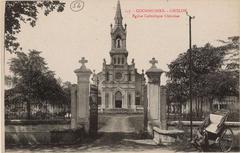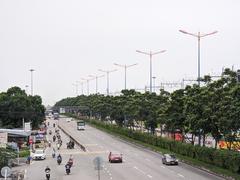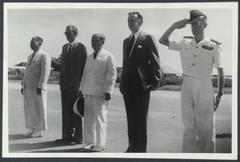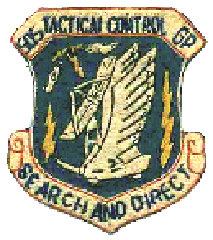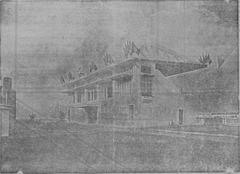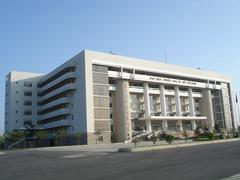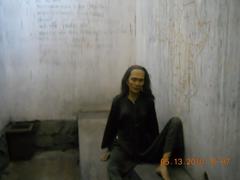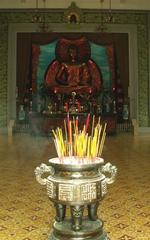Ho Chi Minh City Fine Arts University: Visitor Guide, Visiting Hours, Tickets, and Surrounding Attractions
Date: 04/07/2025
Introduction
Ho Chi Minh City Fine Arts University (Đại học Mỹ thuật Thành phố Hồ Chí Minh) is a renowned institution at the epicenter of Vietnam’s southern art scene. Founded in 1913, the university is both a bastion of artistic education and a living testament to the city’s layered cultural history. For visitors, the university offers a compelling mix of French colonial and modernist architecture, dynamic art exhibitions, and opportunities to witness Vietnamese creativity firsthand. This guide provides all the essentials: a historical overview, practical visitor information, and recommendations for nearby cultural attractions (Vietnam The Art of War; Wikipedia; hcmufa.edu.vn; livinglabvietnam.org).
Table of Contents
- Introduction
- Historical Overview
- Campus and Architecture
- Notable Facilities and Spaces
- Visitor Information
- Art Galleries, Exhibitions, and Educational Programs
- Integration with Ho Chi Minh City’s Urban Fabric
- Notable Alumni and Community Impact
- Nearby Cultural Attractions
- FAQs
- Conclusion
- Sources
Historical Overview
Origins and Early Development (1913–1940)
Founded as the École des Dessins by French artist André Joyeux, the university began as a center for Western-style art education in colonial Vietnam. This early period was marked by the integration of traditional Vietnamese crafts with European techniques, laying the groundwork for a distinctive, hybridized art culture (Vietnam The Art of War; Wikipedia).
Era of Applied Arts and Modernization (1940–1976)
In 1940, the school became the Gia Định School of Applied Arts, emphasizing applied arts and design. By 1971, it had evolved into the Saigon College of Fine Arts, expanding its curriculum and fostering a vibrant community of artists and educators from both Vietnamese and French backgrounds (Wikipedia; livinglabvietnam.org).
Post-Reunification and University Establishment (1976–Present)
After reunification, the institution was reorganized and, in 1981, officially became Ho Chi Minh City Fine Arts University. Today, it is a leading center for fine arts education, research, and cultural preservation, with a profound influence on the development of Vietnamese art (hcmufa.edu.vn).
Campus and Architecture
The university is located in the bustling Bình Thạnh and District 3 areas, with the flagship campus at 196 Pasteur Street. The campus features a blend of French colonial architecture—marked by high ceilings, arched windows, and decorative facades—and functional modernist additions. Designed to inspire creativity, the campus includes spacious studios, landscaped courtyards, and open galleries, all preserving the ambiance of a historical yet forward-looking institution (hcmufa.edu.vn).
Notable Facilities and Spaces
- Studios and Workshops: Specialized spaces for painting, sculpture, lacquer art, and digital media, equipped with professional tools and guided by established artists.
- Exhibition Halls: Public galleries showcasing rotating student, faculty, and guest exhibitions.
- Lecture Halls and Classrooms: Designed for both theoretical and practical instruction.
- Outdoor Areas: Shaded courtyards and green spaces for informal gatherings, outdoor classes, and art installations.
Visitor Information
Visiting Hours and Tickets
- Hours: Monday to Friday, 8:00 AM – 5:00 PM. Weekend visits are typically by appointment.
- Admission: Entry to the campus and most exhibitions is free. Special exhibitions or events may require tickets—check the official website for updates.
Guided Tours and Events
- Tours: Guided tours are available by prior arrangement or during special events, offering insight into the university’s history, architecture, and art programs.
- Events: The university hosts year-round exhibitions, workshops, and festivals. The annual graduation show is a highlight for visitors.
Accessibility and Visitor Guidelines
- Accessibility: Most buildings are accessible, though some historic structures may have limited access. Visitors with specific needs should contact staff in advance.
- Photography: Allowed in public areas and galleries; always seek permission before photographing individuals or works in progress.
- Dress Code: Respectful attire is recommended, especially in studios and exhibition spaces.
Art Galleries, Exhibitions, and Educational Programs
The university’s galleries feature a diverse range of art—from traditional lacquer paintings to experimental installations. Exhibitions rotate regularly, offering visitors a glimpse into both student innovation and faculty excellence. Educational programs include workshops, lectures, and public art projects, some of which are open to non-students. English-language tours and materials are increasingly available (hcmufa.edu.vn).
Integration with Ho Chi Minh City’s Urban Fabric
Situated amid iconic French colonial landmarks and modern city life, the university is deeply embedded in Ho Chi Minh City’s cultural landscape. Through public art projects, collaborations, and outreach programs, it contributes actively to the city’s vibrant art scene and community life.
Notable Alumni and Community Impact
Distinguished alumni such as Lê Sĩ Hoàng have made significant contributions to Vietnamese art and culture, blending traditional motifs with contemporary design. Many graduates are now influential artists, educators, and cultural leaders at both national and international levels (hcmufa.edu.vn).
Nearby Cultural Attractions
Enhance your visit by exploring these nearby sites:
- Gia Định Museum: Explores regional history and culture.
- Ho Chi Minh City Museum: Chronicles the city’s legacy and transformation.
- Notre-Dame Cathedral Basilica of Saigon: Iconic French colonial architecture.
- Ben Thanh Market: Bustling center for food, crafts, and souvenirs.
- Ho Chi Minh City Museum of Fine Arts: Houses extensive collections of Vietnamese art, set in a striking Baroque villa (svietnamtravel.com; mettavoyage.com).
Frequently Asked Questions (FAQ)
Q: What are the visiting hours?
A: Monday to Friday, 8:00 AM to 5:00 PM. Weekend visits require prior arrangement.
Q: Is there an entry fee?
A: General entry is free; special exhibitions may require tickets.
Q: Are guided tours offered?
A: Yes, by arrangement or during special events.
Q: Is the university accessible for visitors with disabilities?
A: Most facilities are accessible, but some older buildings may have limitations. Contact staff for assistance.
Q: Can I take photos?
A: Allowed in galleries and public spaces; seek permission before photographing students or works in progress.
Q: What attractions are nearby?
A: Gia Định Museum, Ho Chi Minh City Museum, Notre-Dame Cathedral, Ben Thanh Market, and the Museum of Fine Arts.
Conclusion
Ho Chi Minh City Fine Arts University is more than an educational institution—it is a living museum and a cornerstone of Vietnam’s cultural identity. Its rich history, stunning architecture, and vibrant art scene make it an essential stop for anyone interested in Vietnamese art and heritage. Whether you’re enjoying a guided tour, exploring exhibitions, or simply soaking in the creative atmosphere, your visit will deepen your appreciation for the city’s artistic and historical richness.
Before your visit, check the official university website or contact staff for the latest updates on events, hours, and accessibility. For a broader cultural experience, explore neighboring attractions and participate in university-hosted festivals and workshops.
To enrich your journey through Vietnam’s art world, download the Audiala app and follow us on social media for curated guides, event notifications, and exclusive insights.
